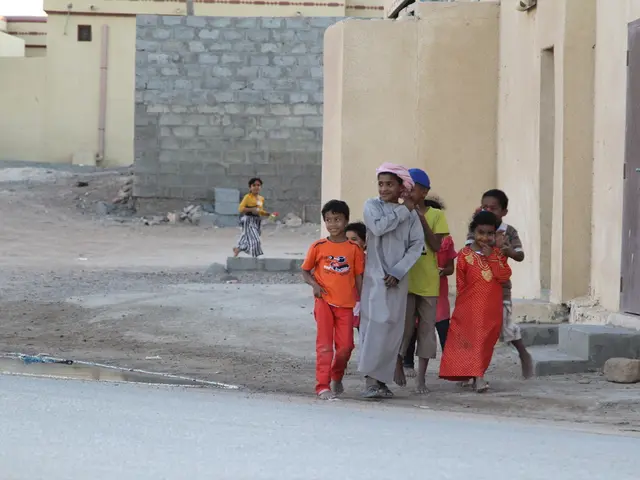Discussing the potential negotiations to resolve the ongoing conflict between Russia and Ukraine, Lukashenko shares his perspective.
In an exclusive interview with Time magazine, Alexander Lukashenko, the President of Belarus, has put forth a unique proposal to end the ongoing conflict between Russia and Ukraine. The plan, dubbed as an aerial ceasefire, aims to bring about a complete cessation of hostilities within 50 days.
The proposed aerial ceasefire would involve an immediate halt to all aerial operations, paving the way for a broader peace agreement. Lukashenko believes that this initiative has the potential to mark the beginning of the end of the conflict, with a direct meeting between U.S. President Donald Trump and Russian President Vladimir Putin in Minsk to advance peace talks.
According to Lukashenko, the success of the ceasefire depends heavily on mutual concessions and agreements between the conflicting parties. During the 50-day period, both sides would observe the implementation of the aerial ceasefire to gauge conditions for a broader peace agreement. If all goes as planned, this could potentially lead to the end of the conflict starting from October 1, 2025, as suggested by Lukashenko's close ally, Russian political scientist Sergey Markov.
However, Lukashenko's proposal has been met with skepticism. Some view the "air truce" as favoring Russia, given that Russia's air strikes continue to challenge Ukraine's defenses. The success of the ceasefire depends heavily on Kyiv's willingness to participate and stop its air operations.
Lukashenko is convinced that if negotiations are conducted reasonably, Russia will never fight with Ukraine again. He emphasizes that a defeat would be costly for all parties involved, including those across the ocean. In line with this, he suggests a demilitarized zone on both sides of the potential border, but calls it a "dead zone."
To further facilitate negotiations, Lukashenko insists that Belarus should not be ignored as a negotiating platform by Zelensky. He proposes a meeting between Trump, Putin, and Zelensky in Minsk to negotiate a ceasefire, with the hope that life would regulate things, and borders could be removed later.
It is important to note that Lukashenko's proposal differs from Russia’s own demands, which reportedly include territorial concessions from Ukraine in Donetsk, Luhansk, and Crimea regions as part of ceasefire conditions. These demands are not part of Lukashenko’s proposal and are regarded as unlikely to be accepted by Ukraine.
In summary, Lukashenko’s ceasefire proposal focuses on an initial aerial truce leading to a full ceasefire in about 50 days, aiming to create conditions for peace negotiations, with a prospective meeting involving the U.S. and Russia taking place in Minsk as part of the process. Whether this proposal will lead to a lasting peace remains to be seen.
- The proposal by Alexander Lukashenko, the President of Belarus, for an aerial ceasefire in the war-and-conflicts between Russia and Ukraine involves policy-and-legislation, as it requires mutual concessions and agreements between the conflicting parties, and could potentially lead to peace negotiations and legislative changes.
- The proposed meeting between U.S. President Donald Trump, Russian President Vladimir Putin, and Ukrainian President Volodymyr Zelenskyy, in Minsk for peace talks, as a part of Lukashenko's plan, is a significant development in the politics of the general-news surrounding the Russia-Ukraine conflict.








